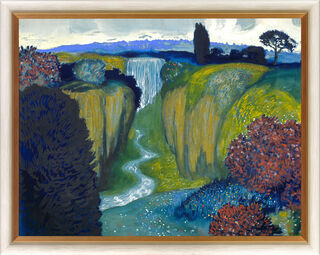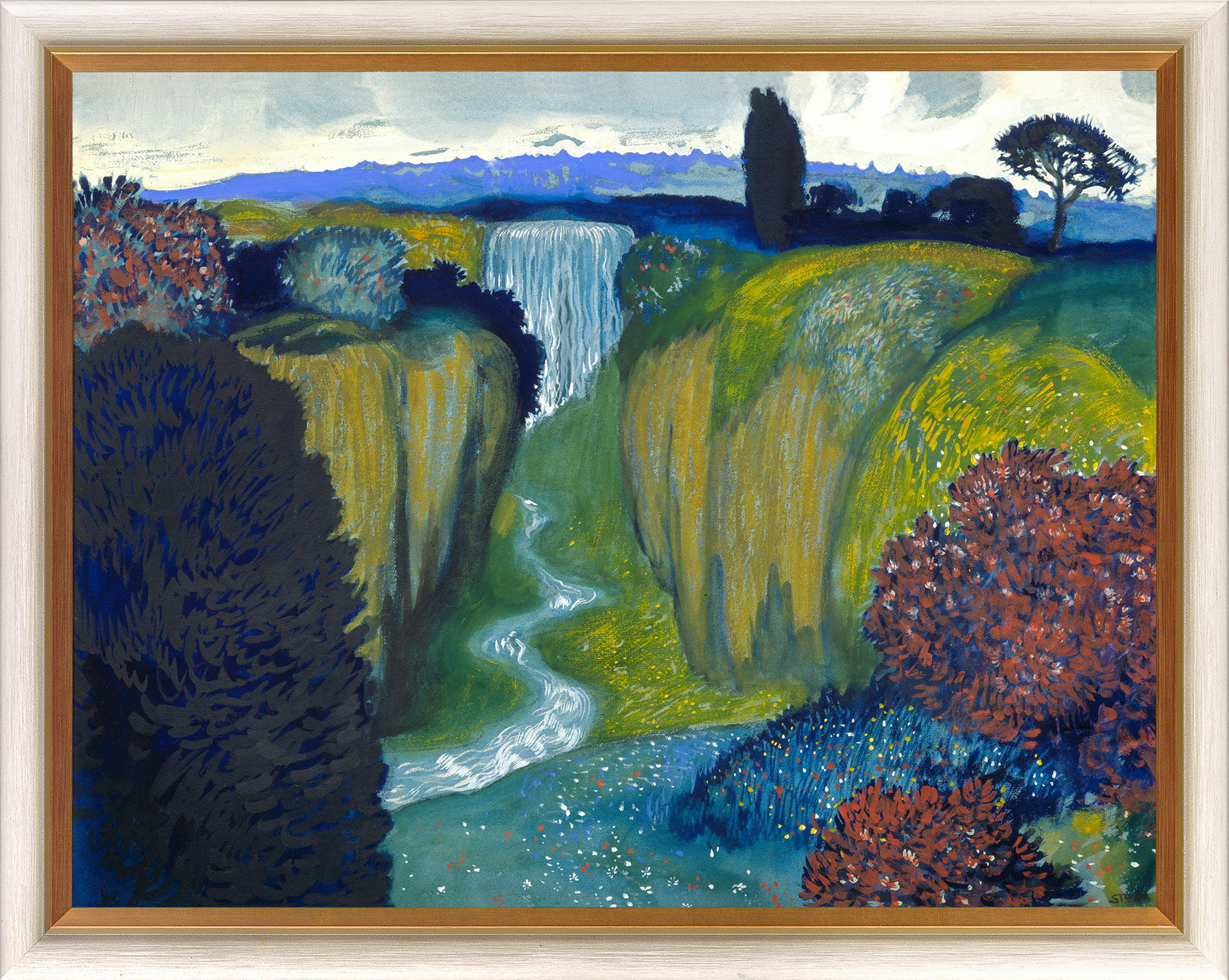Picture "Landscape with Waterfall" (c. 1896), framed


Picture "Landscape with Waterfall" (c. 1896), framed
Quick info
limited, 990 copies | numbered | reproduction, Dietz Giclée print on canvas | on stretcher frame | framed | size 69 x 85 cm (h/w)
Detailed description
Picture "Landscape with Waterfall" (c. 1896), framed
The South of France in Vincent van Gogh's late work is perhaps the most famous example of the extent of the influence of landscapes on a painter's work. However, the subject as such does not even have to exactly depict a geographical model. Sometimes the appeal of a free composition according to one's aesthetic ideas dominates.
The "Landscape with Waterfall" by Franz von Stuck (1863-1928), who tended towards symbolic motifs (The War, 1894, The Sin 1893), is above all, a staging that fascinates with its two-dimensional, aperspectival spatial arrangement.
Original: c. 1896, opaque colours on paper, glued to cardboard, 47.5 x 61.5 cm, Staatsgemäldesammlung Bayern.
Dietz Giclée Edition on high-quality artist's canvas made of 100% cotton, traditionally stretched on a stretcher frame. That allows the picture to be re-stretched in case of any fluctuations in room temperature and humidity. Limited edition of 990 copies, numbered on the back. Framed in a high-quality hand-glided frame. Size 69 x 85 cm (h/w).
Giclée = derived from the French verb gicler "to squirt, spurt".
The giclée method is a digital printing process. It is a high-resolution, large-format printout on an inkjet printer with special different-coloured dye- or pigment-based inks (usually six to twelve). The colours are fade-proof, i.e. resistant to harmful UV light. They have a high richness of nuance, contrast and saturation.
The giclée process is suitable for art canvases, handmade and watercolour paper as well as for silk.
A true-to-the-original reproduction of an artwork in the same size and with the best possible material and colour uniformity.
The mould is usually taken directly from the original so that the replication reproduces even the finest details. After casting the replication, using the most appropriate method, the surface is polished, patinated, gilded or painted according to the original.
A replication of ars mundi is a recognizable copy of the original.


